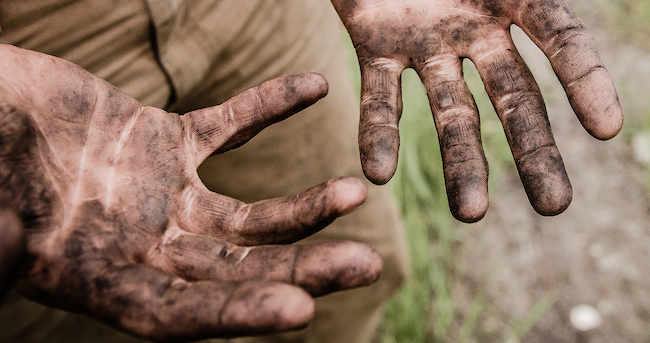
The Mitzvah:
An ordinary kohein, priest may not come in contact with a corpse or any other spiritually defiled object although he is permitted to defile himself for his immediate seven close relatives (Leviticus 21:1, 3, 11).
The laws of tumah and taharah, ritual purity and contamination which are related to death are detailed and complex.
Their full application was poignantly seen in the sacrificial worship and offerings present in the Sanctuary and later on in its permanent structure of the Temple. Any man or woman who was spiritually impure could not enter the sacred walls of the House of G-d. Nor could such a person consume the sacrificial parts that had to be consumed in a state of ritual purity.
Today, the laws of tumah and taharah have unfortunately limited application to the contemporary Jew upon the destruction of the Temple. However it still remains ever-relevant to a kohein who is continually subject to these laws.
The descendants of Aharon must be vigilant to avoid contamination with any object or subject that is impure or which transmits ritual impurity. This precludes him, for example, from entering a cemetery where he will come in close proximity to the graves or to entering a morgue etc
In short, the kohein cannot have anything to do with death or impurity.
So much so, that should a kohein kill another person, he becomes unqualified to bless the congregation in Birchas Kohanim, priestly blessings. However it is noteworthy in this regard that Pinchas’ zealousness to kill Zimri and Cosbi to halt the plague, came in his capacity as a Levi. Only in the aftermath of this heroic deed, did he emerge to merit becoming a full-fledged kohein.
What is anathema to the essence of a kohein that he cannot have any affinity whatsoever with tumah and its close association with death? And in what manner is tumah a contradiction to the role of a kohein?
That a kohein played central role in the Temple – the bastion of holiness – is indicative to his role and affiliation to kedushah, holiness. Judaism views holiness as the synthesis of opposites – the physical and spiritual. Consequently, the kohein operated in the sanctum wherein the spiritual realm flows down to fill the physical world. The Temple symbolizes the interface between heaven and earth. Indeed, life itself is the coexistence of body and soul that are joined together. This harmony epitomizes taharah, ritual purity that is synonymous with G-dliness – the Source of all life.
But death is the tragic breakdown of this bond. It is where the soul departs from the body, where a spiritual vacuum fills the body. The absence of the soul leaves a wholly physical entity. It is thus that induces a state of tumah, spiritual impurity.
Precisely because the kohein’s activities are dedicated to the joining of the physical and spiritual, explains the Shem MiShmuel (Emor 5673), must he painstakingly avoid coming into contact with death that tears them apart. The kohein has to avoid anything that contradicts his propensity to bind things together. In this vein, a divorcee, one who has been left with a feeling of division and disunity, is similarly incompatible with a kohein’s personal mission and hence an ordinary kohein is forbidden to marry a divorcee (Leviticus 21:7).
As we enter the mourning period of the Three Weeks leading up the destruction of the Temple, we hope and pray to recapture that past holiness. We anxiously wait the rebuilding of the Third Temple swiftly in our days so that the kohein can resume his activities and all tumah, contamination will be reversed to taharah, purity. Text Copyright © 2006 by Rabbi Osher Chaim Levene and Torah.org.


